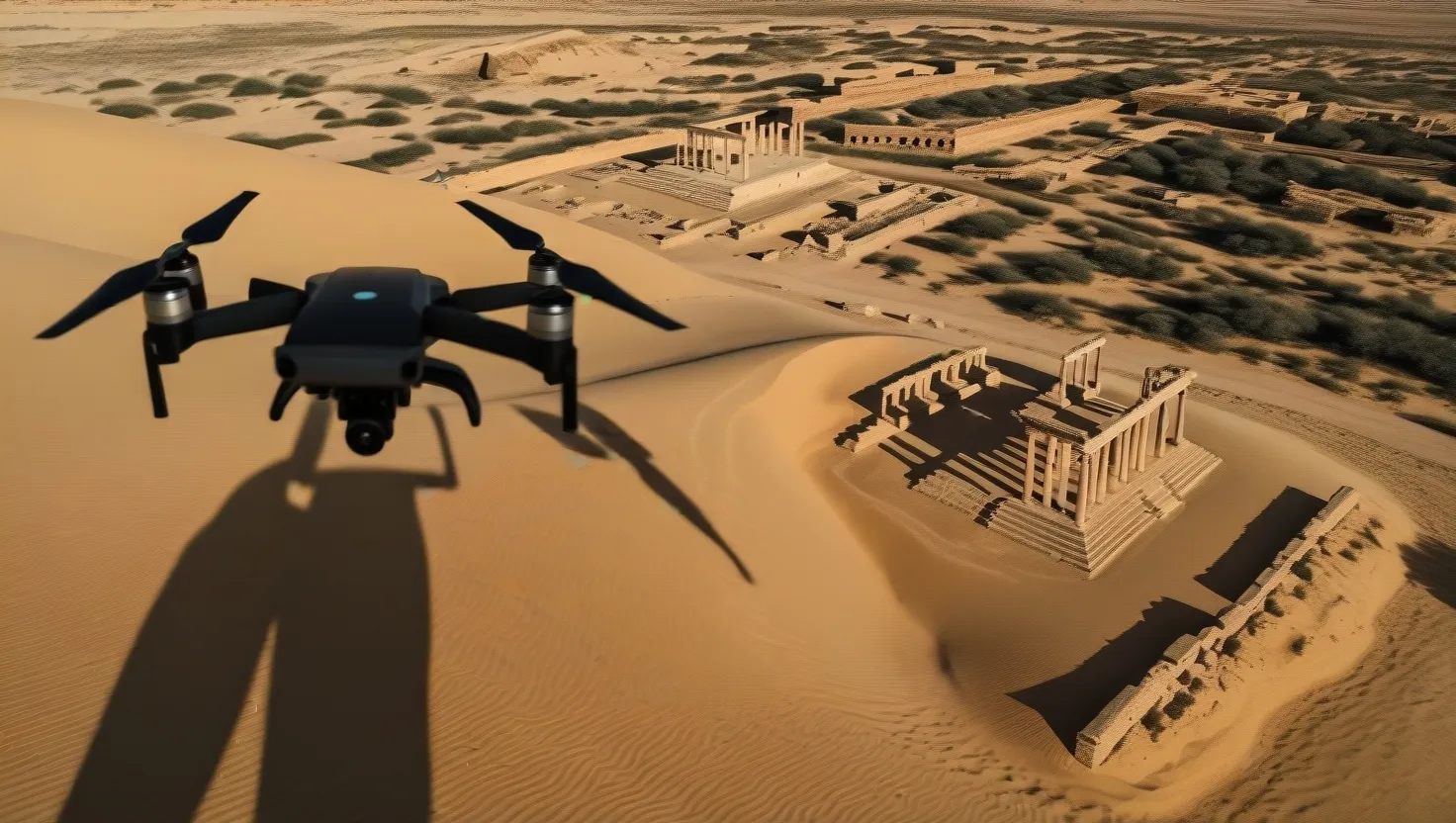In the vast and often inaccessible landscapes of our ancient world, a new tool has emerged to revolutionize the field of archaeology: the drone. Equipped with advanced sensors and imaging technology, these unmanned aerial vehicles are transforming how we discover, map, and preserve our cultural heritage.
Imagine soaring above the desert sands or dense forests, capturing every detail of an ancient site from a perspective that was previously impossible. Drones are doing just that, providing archaeologists with a bird’s-eye view that reveals subtle features, patterns, and structures that might be overlooked from the ground. This aerial perspective is not just about taking pretty pictures; it’s about generating high-resolution imagery and three-dimensional models that offer a comprehensive understanding of archaeological sites.
One of the most significant advantages of drones in archaeology is their efficiency. Traditional ground-based surveys can be time-consuming and labor-intensive, often requiring weeks or even months to cover large areas. Drones, on the other hand, can survey these same areas in a fraction of the time. For instance, in Scotland, a drone flew over 250 miles and captured 420 million data points in just five days, a feat that would be unimaginable with traditional methods. This rapid data collection reduces the time between fieldwork and interpretation, allowing archaeologists to make timely decisions and plan their next steps more effectively.
Drones are also non-invasive, which is crucial for fragile or sensitive archaeological sites. Traditional excavation methods can be intrusive and potentially damaging to artifacts or structures. With drones, archaeologists can assess sites without physical intervention, minimizing the risk of unintended destruction and preserving the integrity of the cultural landscape. This is particularly important in sites like those in the Nile Delta or the ancient Maya landscapes, where the delicate balance of the environment and the artifacts must be maintained.
The preservation and conservation of cultural heritage are another area where drones excel. By mapping ancient landscapes and structures, drones help identify areas at risk of degradation or encroachment. This information allows authorities and researchers to implement measures to safeguard and manage these sites effectively. For example, in Peru, the Ministry of Culture is using drones to systematically record and produce 3D models of archaeological sites, ensuring that these sites are documented and protected for future generations.
Drones are not just limited to aerial surveys; they can also navigate complex environments that are challenging or dangerous for humans. In historic buildings, for instance, drones can fly in GNSS-denied environments, avoiding obstacles and ensuring consistent illumination for documentation. This capability is invaluable for inspecting and documenting large historic interiors without the need for costly scaffolding or high-lift platforms. The Fly4Future team has developed autonomous drone technology that can transition seamlessly between GNSS and GNSS-denied environments, making it possible to document even the most inaccessible areas.
The technology behind these drones is sophisticated. They use photogrammetry and LiDAR (Light Detection and Ranging) to produce detailed models of sites. Photogrammetry involves stitching together multiple aerial photographs to create a 3D model, while LiDAR uses lasers to measure distances and build highly accurate maps. These methods allow archaeologists to understand the condition of sites, potential threats to preservation, and changes in site health and stability over time. For example, in the deserts of Jordan, drones have been used to monitor archaeological sites and detect alterations in landforms, erosion patterns, or vegetation cover, providing valuable insights into environmental and landscape changes.
Beyond mapping and preservation, drones are also aiding in the discovery of new sites. In Belize, for instance, drones equipped with visible light, near-infrared, and thermal sensors have been used to document extant structures and investigate buried features. By combining thermal imaging with photogrammetric mapping, archaeologists have identified architecture that is difficult or impossible to see from the ground. This has led to the discovery of new settlements and a deeper understanding of ancient civilizations.
The ethical considerations of using drones in archaeology are also important. As privacy policies evolve, archaeologists may face barriers in using drones, particularly in areas with strict no-fly zones. However, the benefits of drone technology in preserving cultural heritage often outweigh these challenges. Drones can enter dangerous and humanly-inaccessible spaces, provide detailed images of sites that the human eye cannot see, and assist governments in identifying illegal looting.
In addition to their technical and practical advantages, drones are changing our understanding of past civilizations and their relationship with the environment. By analyzing data from sequential UAV flights over time, archaeologists can gain insights into long-term environmental changes and how these changes impacted ancient societies. For example, in the American Southwest, drones have been used to study the organizational structure and architectural arrangements of ancestral Pueblo sites, revealing how these communities adapted to their environment.
The integration of drones into archaeological research is not without its challenges. One of the key issues is the cost, although this is often offset by long-term savings. Despite the initial investment, drones significantly reduce the time and resources required for surveying and mapping large areas, making archaeological research more accessible and efficient. Moreover, the rapid data collection and analysis capabilities of drones mean that researchers can respond quickly to changes or discoveries, which is crucial in the fast-paced world of archaeology.
In conclusion, drones are revolutionizing the field of archaeology by providing a new perspective on ancient landscapes and sites. With their ability to capture high-resolution imagery, generate 3D models, and aid in the preservation of cultural heritage, drones are enhancing our understanding of past civilizations. As technology continues to advance, the role of drones in archaeology will only become more significant, offering a powerful tool for uncovering history from above and ensuring that our cultural heritage is preserved for generations to come.
The future of drone archaeology is exciting and full of possibilities. As we continue to push the boundaries of what is possible with drone technology, we are likely to uncover more hidden sites, gain deeper insights into ancient societies, and develop more effective strategies for preserving our cultural heritage. Whether it’s exploring the ruins of a lost city or monitoring the health of a vulnerable archaeological site, drones are proving to be indispensable allies in the quest to understand and protect our shared human history.






